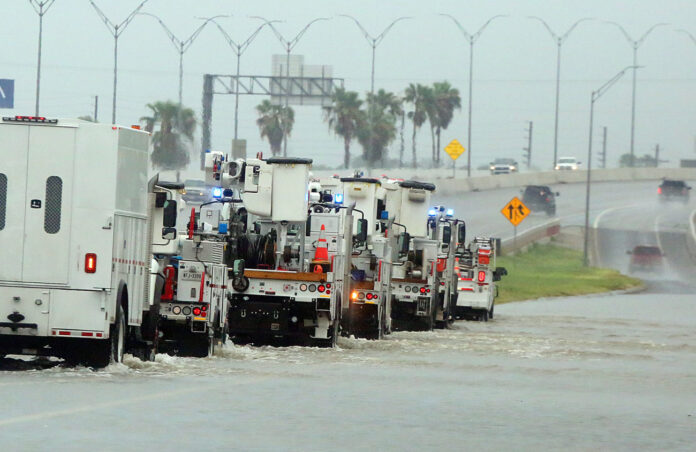Hurricane Hanna was a stark reminder that the world doesn’t stop turning for a viral pandemic, now matter how much closed businesses and stay-at-home orders might affect our perceptions.
Fortunately, unlike the COVID-19 pandemic that is a new experience for nearly everyone, tropical storms are old, familiar events to which Rio Grande Valley residents are accustomed.
Hanna hit north of the Valley Saturday as a category 1 hurricane with sustained winds up to 90 mph, then turned southwest and crossed through Starr County into Mexico. Peripheral winds and rain dropped up to 15 inches of rain in the Valley and tens of thousands of residents lost power; many households are still in the dark.
Fortunately, Hanna was a traditional Atlantic storm, developing in the ocean and giving local residents and officials time to plan. Many residents already were hunkered down at home due to the coronavirus threat, and already had the supplies and food necessary to ride out the storm and it effects. Local officials were quick to issue disaster declarations and request state and federal help even before Hanna made landfall. Timeliness is essential during these kinds of emergencies, and experience led officials to get the wheels turning as quickly as possible.
Gov. Abbott visited the Valley on Tuesday to assess the damage. We trust that officials took the opportunity to inform him fully regarding the area’s needs, both with regard to the storm and our difficulty in reversing the rise in COVID-19 cases here.
Shelters were opened for anyone who might seek refuge during the storm. Few people went, possibly because they feared possible exposure to people who might be carrying the virus. Officials should keep those shelters ready, however, as continued flooding and electrical losses still could drive some residents out of their homes.
Now begins the cleanup, something else with which we’re all too familiar. Debris must be removed from roads and property, power lines must be reconnected, drainage canals cleared so they can handle the runoff that will continue to flow for several days.
Flooding seems to have become an annual occurrence in recent years. While that brings familiarity, the pandemic complicates matters this year. Power outages threaten to well-being of virus patients who need ventilators, oxygen concentrators or other breathing assistance. High water and debris could impede ambulances and other emergency responders as they answer new calls. Even construction crews have added challenges; for example, one funeral home, already burdened with several COVID-19 victims, suffered roof damage. Lingering humidity from standing water could feed fungal spores that can plague people with allergies and respiratory problems and weaken their resistance to a viral infection or compound its effects.
Yes, we’ve been through this before, but every new experience creates new opportunities to learn. Let us review the dual challenges of a storm and viral epidemic, and use what we learn to mitigate the effects of both occurrences in the future.




